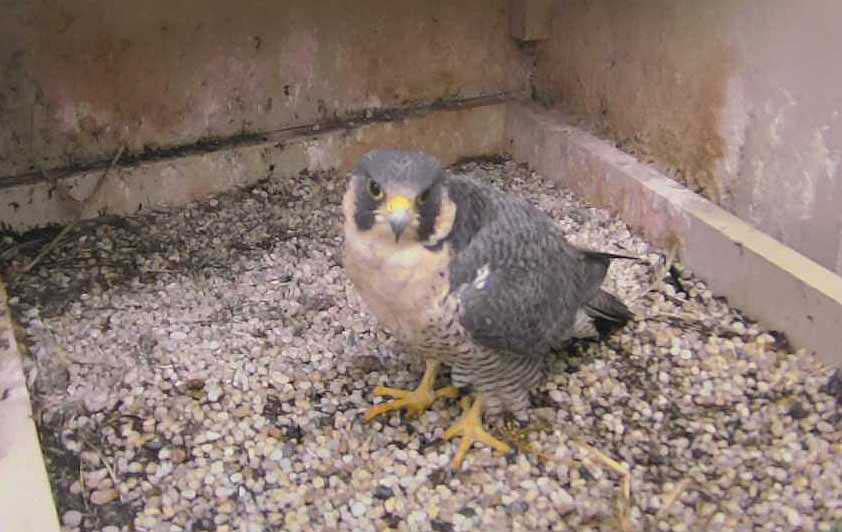Cathedral falcon nest gets a new matriarch
Via the National Aviary snapshot camera at University of Pittsburgh
A new female peregrine falcon arrived at the Cathedral nesting site earlier this fall.
October 20, 2019
The Cathedral of Learning appears to have lost Hope. For some local birdwatchers, that’s a good thing.
Hope, the female peregrine falcon who’s nested on the 40th floor of the Cathedral since she arrived in 2015, was infamous for killing and eating some of her chicks each spring — an inexplicable trait that didn’t endear her to local birdwatchers. But a new female arrived at the Cathedral earlier this fall and appears to have since driven Hope off for the foreseeable future.
The newcomer is unbanded, meaning her backstory is unknown. Local bird monitors have named her Morela, Polish for “apricot” — a nod to the female’s distinctive peach-colored breast, belly and cheeks. Pittsburgh bird blogger Kate St. John, the primary monitor of the nesting site, has documented Morela’s story on her blog, “Birds Outside My Window,” a main source of information for the community of falcon devotees in Pittsburgh.
Morela arrived at Pitt sometime before Sept. 4, when linguistics professor Alan Juffs first caught her on camera. She spent a few weeks warring over the nest with Hope, its previous female occupant. Hope now hasn’t been seen for several days, and it seems Morela has successfully laid claim to the Cathedral and the male that lives there.
Although Pittsburgh’s various bridges and tall buildings are home to a number of peregrine pairings, the Cathedral site is a prime location for falcons because it’s so much taller than any other buildings in the immediate area.
The first falcon to try to nest on the building, Dorothy, arrived in 2001. It was St. John who convinced Pitt, the Western Pennsylvania Conservancy and the Pennsylvania Game Commission to install a gravel box where Dorothy could lay her eggs.
St. John noted that the new female paid a long visit Thursday to the nesting box outside the 40th floor of the Cathedral, although she wouldn’t lay eggs there until the spring. Though the male peregrine — Morela’s new mate — hasn’t been caught on camera for a few months, he is most likely Terzo, who arrived at Pitt in 2016.








